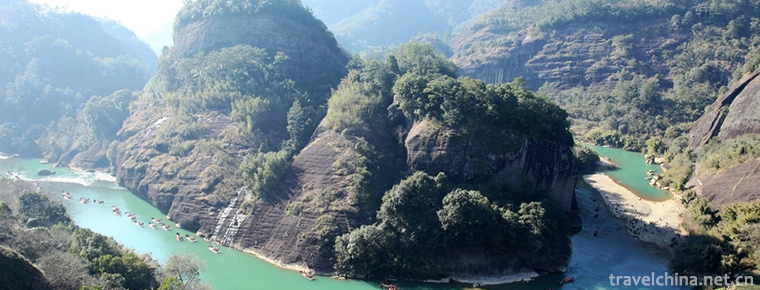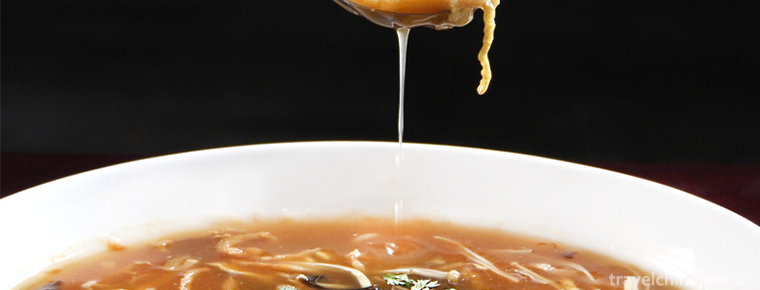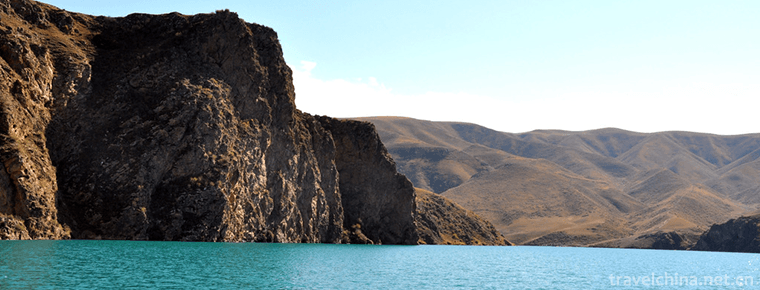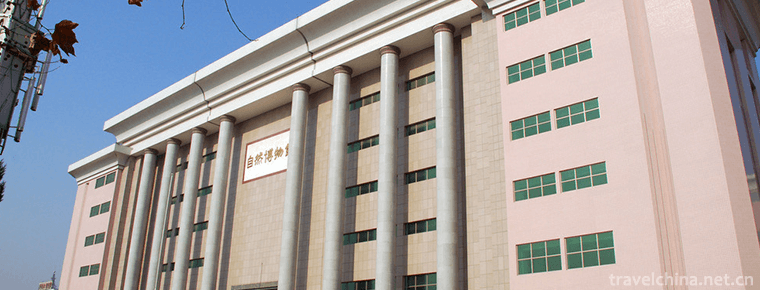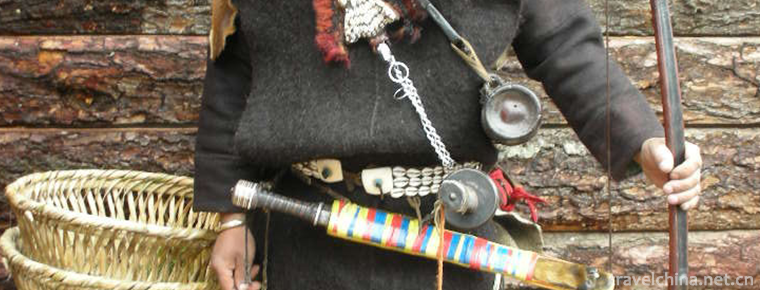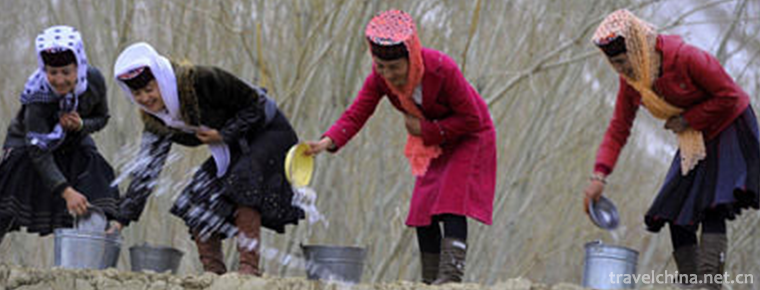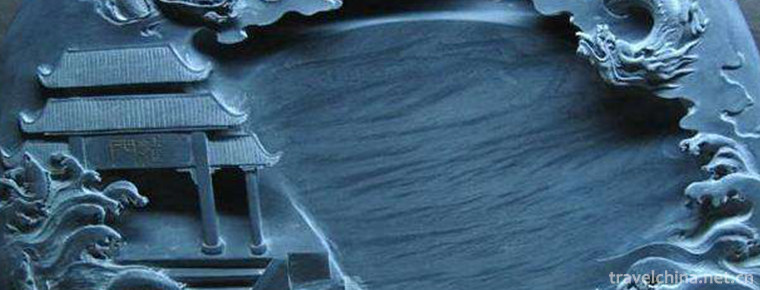Xiaolangdi Dam
Xiaolangdi Dam
Xiaolangdi, the Yellow River Xiaolangdi, is located in the Yellow River Xiaolangdi Scenic Area at the junction of Luoyang City and Jiyuan City, Henan Province. (hereinafter referred to as "scenic area") It is located 30 kilometers southwest of Jiyuan City, 40 kilometers north of Luoyang City, with a total area of 1262 square kilometers (272 square kilometers of water surface).
Xiaolangdi Scenic Spot is divided into four distinct scenic spots: Xixia Lake, Daba Wetland Park, Zhangling Peninsula Resort and the Three Gorges of the Yellow River. The four scenic spots have different characteristics, matching East and west, just like the four pearls inlaid on the Mother River, which has become a hot tourist spot attracting worldwide attention.
Honors won by the scenic spots include: National Water Conservancy Scenic Spot, National AAAA Class Tourist Spot, National Environmental Protection Model Project, National Top-ranking Ecotourism Quality, China's Most Attractive Places, Ten Hot Tourism Spots in Henan Province, Ten Most Beautiful Lakes in Henan Province, and Cherry Blossom Festival. China's most internationally renowned leisure tourism festival brand and other titles, is one of the most distinctive scenic lines in the Central Plains region. Xiaolangdi was named "50 Sceneries of the Yellow River in China" at the 2008 China Yellow River Tourism Conference. Since September 20, 2018, the ticket price of Xiaolangdi scenic spot has been reduced from 50 yuan per person to 40 yuan per person.
Xiaolangdi Scenic Area
The Xiaolangdi Lake Scenic Area of the Yellow River is located at the exit of the last Canyon in the middle reaches of the Yellow River, 30 kilometers southwest of Jiyuan City, Henan Province (Xiaolangdi Village, Mengjin County, on the South bank, and Liaowu Village, Jiyuan City, on the North bank), and 40 kilometers south of the central city of Luoyang City, Henan Province.
National Highway 207, Lianhuo Highway, Changji Highway and Erguang Highway pass through the edge of the scenic spot. The scenic spot of Xiaolangdi has beautiful scenery and spectacular traffic facilities.
The scenic spot is located in the central part of the Golden Tourist Route - Henan "Three Points and One Line". It spans both sides of the north and south, links the Fen and Weihe Basins in the West and the North China Plain in the east. North of Jinzhong area, the scenic spot is an ecological park based on Xiaolangdi project, featuring mountains, waters, forests and grasses.
Introduction to scenic spots
Xiaolangdi Water Conservancy Project is a key project for harnessing and developing the Yellow River. It belongs to the national "Eighth Five-Year Plan" key project. The project was closed in 1997 and completed at the end of 2001. Xiaolangdi is located on the main stream of the Yellow River 30 kilometers southwest of Jiyuan, Henan Province, 130 kilometers above the Sanmenxia Reservoir and 115 kilometers below the Garden Estuary of Zhengzhou. It is the only controlled project below the Sanmenxia of the main stream of the Yellow River that can obtain a large reservoir capacity.
Xiaolangdi Reservoir is located in the Yellow River Gorge of Shanxi and Henan Province, which crosses Zhongtiao Mountain and Wangwu Mountain. The total length of the reservoir area is 130 kilometers and the total area is 272 square kilometers. After the closure of Xiaolangdi Dam, more than 20 scenic spots such as Xixia Lake, Dam Wetland Park, Zhangling Peninsula Resort, the Three Gorges of the Yellow River and the magnificent reservoir dams in the Jin-Henan Yellow River Gorge and reservoir area intersect each other to form the natural landscape of lake and mountain, thousand islands and "high Gorges out of Pinghu", which makes Xiaolangdi Reservoir a large-scale tour composed of natural scenery of mountains and rivers and water conservancy projects at the same time. Tour area
A large number of peninsulas, isolated islands and dangerous peaks in Xiaolangdi Reservoir make the natural landscape close to winding bays and vast lakes with smoke. Boarding a boat from the dock, fighting against water and waves, entering and leaving the high Gorges and Pinghu Lake, enjoying the scenery of the coastal mountains and rivers, enjoying the elegance of the mother river to the fullest extent, satisfying people's noble enjoyment and pursuit of returning to nature with the beauty, quietness, wonder, victory and elegance of the landscape, and the luxury of modern fashion in the style.
The Three Gorges of the Yellow River is the essence bred by Xiaolangdi and Wangwushan, located 20 kilometers upstream of Xiaolangdi Reservoir Dam, with a total area of 40 square kilometers. It is the essence of Xiaolangdi Scenic Area. Bali Hutong is located in the narrowest part of the middle and lower reaches of the Yellow River. The two sides of the Hutong are cut off and the middle river rushes. The Three Gorges have their own charm: the Gushan Gorge is a miraculous artist with thousands of walls; the Longfeng Gorge is a winding snake; the Dayu Gorge is open and stretching with thousands of meteorologies. Especially the Nine-pedal Lotus Treasure, Nine-pedal Nine-level, the next higher, if the lotus blossoms, like lotus lotus, known as "Gongshan Yu axe". Moreover, there are many rich cultural sites such as Sui and Tang ancient trestle road, Chen Xiejun's Yellow River crossing and so on. There are more than 60 natural and humanistic scenic spots, which are rare landscapes in northern China and can be completely comparable with the Yangtze Three Gorges.
After the closure of Xiaolangdi Reservoir, it has attracted a large number of tourists who admire the beautiful scenery. They praise Xiaolangdi as "Xiaoqiandao Lake". They believe that Xiaolangdi, which combines the risks of the Three Gorges and the beauty of the Lijiang River, will become a new tourist destination.
Visiting Xiaolangdi, you can enter the scenic spot from both sides of Shanxi and Henan. Xiaolangdi Reservoir Area covers a total area of 272 square kilometers, involving Yuanqu, Xia and Pinglu Counties in Shanxi Province. Among them, Yuanqu County is located in the middle of the backwater area of the reservoir, and its water area accounts for 60% of the total area of the reservoir area.
Scenic spot content
The Xiaolangdi Dam Site controls the basin area of 694,200 square kilometers, accounting for 92.3% of the Yellow River basin area. The total storage capacity of the reservoir is 12.65 billion cubic meters, the storage capacity of water and sediment regulation is 1.05 billion cubic meters, the dead storage capacity is 7.55 billion cubic meters, and the effective storage capacity is 5.1 billion cubic meters. The development goal of Xiaolangdi Project is to prevent flood, ice and silt, and to give consideration to water supply, irrigation and power generation.
Daba Wetland Park, the core scenic spot, covers an area of about 10 square kilometers, of which water area accounts for 30%. There are thousands of kinds of grass and trees, 175 kinds of waterfowl, swans, egrets, Mandarin ducks, black storks, white storks, great bustards and golden carvings, reflecting the moon at the three bridges in the reserve behind the dam; pavilions at the center of the lake reflect the moon; suspension bridges view waterfalls, round dream pavilions view waves by fence; waterfalls Tiancheng, viewing windows; Peony patches, beautiful trees into forests, winding paths, corridor walks, scenic areas "four seasons of birds, flowers and fragrance" The Daba Wetland Park has become the best wedding photography base in Central Plains.
Today Xiaolangdi forms the natural scenery of lakes, mountains, thousands of islands, high Gorges and Pinghu lakes.
It makes Xiaolangdi scenic spot become a large-scale tourist area consisting of natural scenery of mountains and rivers and water conservancy projects at the same time. Welcome friends from all over the world to visit Xiaolangdi and experience the perfect combination of landscape culture and Yellow River culture.
Best Tourist Route (North Bank of the Yellow River): Free tour of Xixia Lake, Xitan Island, enjoy the wetland of the Yellow River; into the central scenic spot, over 300 meters long cable bridge, close to the gentle mother river. Tour: Sculpture Square - Wisteria Corridor - Small Yellow River - Old Yellow River Road - Jiuqu Bridge - Crescent Lake - Cherry Island - Zhulin River Waterfall - Hongshi Dam - Haoran Waterfall - Waterfall Cave Group... Tongshuling Wharf Tour the Three Gorges of the Yellow River
brief introduction
Xiaolangdi Water Conservancy Project of the Yellow River is one of the most distinctive scenic lines in Xiaolangdi Scenic Area. Xiaolangdi Dam is located 30 km southwest of Jiyuan City. Xiaolangdi Dam is not only a monument in the history of Yellow River control in China, but also the most challenging masterpiece in the history of water conservancy projects in the world. It is also the second largest water conservancy project across the century in China. With a total installed capacity of 1.8 million kilowatt (6 300,000 kilowatt mixed-flow generators) underground power plant, 160 meters high, 1667 meters long clay inclined core rockfill dam, towering water intake tower, spectacular water outlet, there are 108 crisscrossing holes in less than one square kilometer range, so Xiaolangdi has many functions such as flood control, ice prevention, power generation, sand discharge and so on. It is a tourist's view of the Yellow River. The vicissitudes of the river have changed dramatically. The annual water and sediment regulation activities are magnificent and comparable to the Qiantang Tide. After reservoir impoundment, the vast water surface, winding river lanes and magnificent mountain momentum formed in the upstream of the dam compete with each other, forming the "good scenery of Beiguo mountains and rivers - Xiaolangdi of the Yellow River".
The Three Gorges of the Yellow River, which integrates the landscape culture and historical culture of Xiaolangdi, Wangwu Mountain and Jingzi Mountain, is one of the essence of the scenic spot. Located 20 kilometers upstream of Xiaolangdi Reservoir Dam, the total area is 40 square kilometers. The Three Gorges have their own charm: Bali Gorge is located in the narrowest part of the middle and lower reaches of the Yellow River, with broken walls on both sides and tortuous rivers running in the middle; Gushan Gorge has a magical workmanship with thousands of walls; Longfeng Gorge is full of snakes and twists and turns. Especially the Nine-pedal Lotus Treasure, Nine-pedal Nine-level, the next higher, if the lotus blossoms, like lotus lotus, known as "Gongshan Yu axe". The canyon landscape is unique, and it has two characteristics of "Nanxiong Beixiu" in the landscape of our country.
Heluo culture is the representative of the history and culture of the Yellow River in Xiaolangdi Scenic Area. Located 15 kilometers downstream of Xiaolangdi Dam. Heluo Cultural Scenic Spot is composed of the Mausoleum of Emperor Wudi of Hanguang, the Negative Tu Temple of Longma and the former residence of Wang Duo. Wang Duo's former residence has a collection of 90 frames of stone carvings of Wang Duo's representative calligraphy work "Simulated Mountain Garden Tie", which comprehensively demonstrates Wang Duo's calligraphy art. Longma Yintu Temple, also known as "Fuxi Temple", is the sacrificial site of Fuxi, the ancestor of Chinese culture and human roots. It is also the source of Heluo culture. It attracts a large number of tourists every year to seek their roots and ancestors. The Mausoleum of Emperor Guangwu of the Han Dynasty is the cemetery of Emperor Guangwu Liu Xiu, the founding emperor of the Eastern Han Dynasty. It is a national key cultural relic protection unit. There are 1458 ancient cypresses of Sui and Tang Dynasties in the mausoleum. Its unique "four wonders and three wonders" have been praised by visitors for thousands of years.
Xiaolangdi Scenic Area of the Yellow River is a large-scale mountain lake scenic area with the main characteristics of the water conservancy project and Canyon rivers in the middle and lower reaches of the Yellow River, which reflects the scenery and historical culture of the Yellow River. It is the best place for sightseeing, leisure and vacation tourism.
National first-class eco-tourism products, National Water Conservancy Scenic spots, ten hot tourist spots in Henan Province, and the beautiful scenery of the northern country, Xiaolangdi of the Yellow River, warmly welcome your arrival.
Engineering significance
The failure of the Sanmenxia Project is mainly manifested in the failure of the main purpose of its original design. The negative effects are mainly manifested in that the dam lowers the flow velocity and accelerates the upstream siltation after raising the water level, thus aggravating the flood in the upstream Weihe River area. The Xiaolangdi Dam Project of the Yellow River is the remedy for the failure of the Sanmenxia Project of the Yellow River.
The design and dispatch of Xiaolangdi Project still draws lessons from the Sanmenxia Project. The experience and lesson of Sanmenxia Project on sediment problem is that the estimation of upstream soil and water conservation and sediment retention is too optimistic, and the estimated sediment inflow into reservoir is too low. In the demonstration of Sanmenxia Project, the effect of upstream soil and water conservation and reservoir on sediment inflow is not considered. The second lesson of the Sanmenxia Project is that reservoirs on sandy rivers should not be operated by high water level impoundment, but by "impoundment, clearance and muddy discharge" method. When the flood season is low, the building should have sufficient capacity to discharge flood and sediment. The Three Gorges Project has learned this important experience. The operating water level in flood season is controlled at 145 meters, which is 30 meters lower than the normal storage water level. At the same time, a large number of permanent discharge structures have been set up at the lower elevation of the dam. When the water level is 145 meters, the discharge capacity can reach 64200 cubic meters per second, which makes the reservoir in flood season basically in a smooth state and can greatly reduce the siltation of the reservoir. The selection of reservoir storage is in October after flood season, and it will be extended to November in some years. The third lesson of the Sanmenxia Project is that the siltation of the Weihe River Valley at the end of the reservoir has not been properly handled. The Three Gorges Reservoir operates at 145 meters during the flood season with a large amount of sediment. At the end of the Reservoir, near Linxian County in Fuling, the reservoir basically maintains the state of natural river course, while the Chongqing Port Area is in the state of free flow of natural river course.
Ticket Policy
Ticket 60/yuan half price 30/yuan from March 1 to October 31 in peak season
Off-season Nov. 1-the end of February next year, admission ticket 40/yuan, half-price 20/yuan
Enjoy half-price tickets:
1. Older people over 60 years old and under 70 years old hold valid certificates to buy half-price tickets.
2. Labor models above the provincial level and excellent teachers above the provincial level shall purchase half-price tickets with valid certificates.
3. Students in school purchase half-price tickets with valid certificates for children over 1.2 meters with student certificates.
Enjoy free tickets:
1. Older people over 70 years old hold valid certificates and are exempt from tickets.
2. Active servicemen, retired cadres, first-class model workers and disabled persons are exempted from ticket purchase with valid certificates.
3. Journalists with press cards, tour guides and children under 1.2 meters in height are exempted from admission tickets.
Tourist routes
One-day tour
Wulongkou Scenic Area-Xiaolangdi
Wang Wu Mountain Scenic Area-Xiaolangdi
Jiuligou Scenic Area-Xiaolangdi
Galaxy Gorge Scenic Area-Xiaolangdi
Two-day Tour
Xiaolangdi-Jiyuan City Area-Jinyuan Wangwushan-Jiaozuo
Xiaolangdi-Huayuankou of Zhengzhou-Kaifeng City
Route recommendation:
Jiyuan City-Xiaolangdi Special Line-Xiaolangdi Scenic Area
A: Lianhuo Expressway to Erguang Expressway, Jili Mengzhou Station, to the West until the scenic spot.
B: Zhengjiao Expressway turns to Changji Expressway and Jiyuan East Station. Take Xiaolangdi Special Line to the scenic spot.
C: Jiyun Expressway and Jijin Expressway are from Jiyuan South Station to Xiaolangdi Special Line to the scenic spot.
Admission ticket
Peak season (01 April - 31 October): 60.00 yuan off season (01 November - 31 March): 40.00 yuan.
Since September 20, 2018, the ticket price of Xiaolangdi scenic spot has been reduced from 50 yuan per person to 40 yuan per person.
Pictures From: http://bbs.fengniao.com/forum/10460693.html



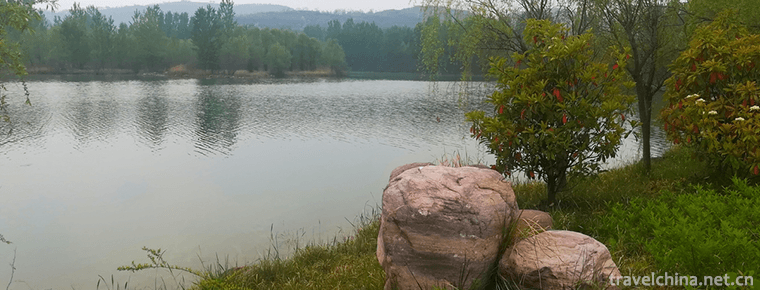
-
Mount Wuyi
Wuyi Mountain, Wuyi Mountain is located at the junction of Jiangxi and northwest Fujian Province. The southeastern foot of Wuyi Mountain has a total area of 999.75 square kilometers. It is a famous sc.
Views: 191 Time 2018-10-28 -
Free and unfettered hu hot soup
The authentic Xiaoyao Town Hu Hot Soup, produced in Xiaoyao Town, Xihua County, Zhoukou City, Henan Province, is a famous snack in China.
Views: 277 Time 2018-11-26 -
Karajun Scenic Area
Karajun is Kazakh, meaning "the wilderness on the ridge". Karajun Mountain is a stretch of mountains from east to west. On both sides of it are hills with ravines and combs.
Views: 155 Time 2018-12-12 -
Zhao tomb in Qing Dynasty
Zhaoling Tomb of Qing Dynasty, the mausoleum of Taizong Emperor Taiji, the founding monarch of the second generation of Qing Dynasty, is located in the ancient city of Shenyang (Shengjing).
Views: 172 Time 2018-12-26 -
Shandong Tianyu Natural Museum
Shandong Tianyu Natural Museum is located in the western section of Lianhuashan Road, Pingyi County, Linyi City, Shandong Province. It is the largest natural geological museum and the largest dinosaur.
Views: 261 Time 2019-02-08 -
Manufacturing Techniques of Spotted Copper
The bronze production technology, the traditional handicraft of Qujing City, Yunnan Province, is one of the national intangible cultural heritage..
Views: 145 Time 2019-04-03 -
Cloth tiger
Cloth tiger is a kind of traditional handicraft which has been widely spread among Chinese people in ancient times. It is also a good toy for children, indoor decoration.
Views: 246 Time 2019-04-04 -
The Story of Guangchan Marquis
The story of Guangchan Marquis refers to a local folklore widely circulated in Yangcheng County, Jincheng City. Guangchan Marquis refers to an ordinary folk veterinarian in the Northern Song Dynasty.
Views: 158 Time 2019-05-01 -
Loba Costume
Clothing custom is an important manifestation of human material and spiritual cultural life, with a long history. The Loba people live in dozens of rivers and valleys in the vast Loba area, which are .
Views: 497 Time 2019-05-15 -
Tajik Water Diversion Festival and Seeding Festival
In Tashkurgan Tajik Autonomous County of Xinjiang, Tajik Water Diversion Festival and Seeding Festival are Tajik agricultural festivals. In Tajik, the sowing Festival is called "Hamozivast" .
Views: 225 Time 2019-06-17 -
Inkstone making skills
Inkstone making skills, local traditional handmade inkstone making skills in Shexian County of Anhui Province and Wuyuan County of Jiangxi Province, is one of the national intangible cultural heritage.
Views: 139 Time 2019-07-01 -
Suzhou University
Suzhou University is a full-time undergraduate college in Anhui province. It is an applied undergraduate university in Anhui province. Anhui higher education revitalization program "Local applica.
Views: 168 Time 2019-11-21
